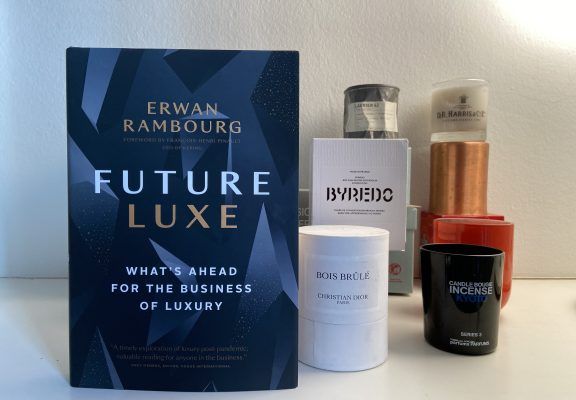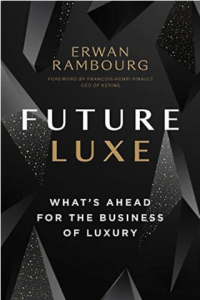

Ex Libris
Future Luxe, by Erwan Rambourg
07/12/2021|
5 mins
Mapping the future of aspirational and positioning goods and services

| No. of pages | 258 |
| Publisher: | Figure 1 |
| Language | English |
| ISBN(first edition in English): | 978-1-77327-126-2 |
| Year of publication | 2021 |
| Year of first publication | 2021 |
| Place of publication | Vancouver (Canada) |
| Where to buy: | Amazon |
In three sentences:
«Acquiring a luxury product (…) means becoming part of a tradition that is being reinterpreted and renewed by a creative vision» «Luxury products are the ultimate purchase for people to wish to announce that they have arrived» «Being environmentally friendly will be increasingly important to the up-and-coming luxury consumers»
In 300 characters:
An interesting and revealing book to discover possible future avenues for the luxury sector and all the categories that aspire to capture its meaning and value.
Written accurately and concisely (sometimes it seems like a PPT presentation), the most interesting content from the inspirational and strategic viewpoint is in the author’s descriptions of how tensions, needs, motivation, categories and opportunities have changed in the world of luxury and regarding people’s aspirations in general.
Why I should read it:
- The contemporary global view: after years being bombarded by texts that only looked at Asia – China in particular – to explain the future of luxury, we finally find a book that has a global perspective, reinstating the sector’s more mature markets in its analysis.
- Useful working definitions: many reference texts that map luxury and define its chronology tend to be very inspiring, but not really applicable to our decisions. This is not the case with this book. For example, when Rambourg defines luxury today (“The purchase of luxury tells you where you come from, which group you are part of, and offers an anchor, a reference point in an ever-changing world, an illusion that you are part of a bigger story”), it allows us to identify future avenues for our decisions.
- Some parts of the book refer to themes but do not deal with them in depth. The author touches on the intrinsic characteristics of luxury more lightly than the emotional aspects that companies and brands should take on board if they want to be relevant to today’s consumer.
- It is refreshing to see that the text is interspersed with interviews with professionals – not necessarily famous figures – and that the author strives not to succumb to the smoke and mirrors that luxury uses as part of its USP.
- This is a text that can be read starting at the end, especially if you don’t have much knowledge of the companies in the luxury sector. The list of players and the summary of predictions (pages 231-235) give us a taste of what the book will be like.
- The chapters dedicated to sectors that have appropriated luxury codes – either formally or because they share needs and motivation – are very useful, because they can provide valuable inspiration for our own sectors. Chapter 7, “The luxury of health”, is especially interesting.
If you like this text, you might also like:
Deluxed, by Dana Thomas.
The Catch by The Hunter
This article comes from The Catch, The Hunter's strategic inspiration tank. Register with The Catch to access and receive all its content.
Subscribe now
I'm interested in for my brand
If you would like to know how 15 years of research and mapping enable us to make strategic recommendations that are innovative and relevant, write to us and we'll get In touch for a chat.
Tell me more